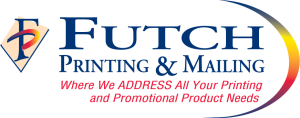 In some ways, the most important goal of any piece of print marketing isn’t merely to act as an educational tool for your target audience. While conveying the message of what your product or service does and why they need it is integral to the success of your campaign, it is only one small part of a much larger goal. One of the major keys to success in advertising involves evoking an emotional response from people, which is something that print marketing as a medium can do quite well – if you approach it from the right angle.
In some ways, the most important goal of any piece of print marketing isn’t merely to act as an educational tool for your target audience. While conveying the message of what your product or service does and why they need it is integral to the success of your campaign, it is only one small part of a much larger goal. One of the major keys to success in advertising involves evoking an emotional response from people, which is something that print marketing as a medium can do quite well – if you approach it from the right angle.
What Does “Emotion” In Print Marketing Actually Mean?
To boil it down to its essentials, invoking an emotional response from a person who views a print marketing material means that you’ve gotten them to think more than just “I understand what this product does” at the end of a piece. You don’t necessarily want to leave a person with the idea of “This particular product will help solve my problem” per say – you want to leave them with a sense of “Not only will this product help solve my problem, but it will also make me happier at the same time.” You want them to long for the emotion every bit as much as they do for the product, which is where the real success of this technique rests.
Nostalgia is the Key to the Emotional Response
One of the single best ways to inject emotion into your print marketing is through good, old-fashioned nostalgia. Even if your message is framed in a way as simple of “Things used to be great, but now you have a problem. With X product or service, they can be great again,” you’re going a long way towards tying your particular product or service to emotional past experiences that the customer has had. This lets them both acknowledge that they long for the days where things were much simpler and gets them to realize that with what you’re offering, they may just get there again.
In the AMC television show “Mad Men,” set against the backdrop of the 1950s print advertising industry, Don Draper at one point early on creates an astounding pitch for the Carousel from Kodak. For those unfamiliar, the Carousel was a slide projector that made it easier than ever to enjoy all of the wonderful photographs that you’ve taken over the years on a much larger scale than ever before.
Don didn’t just zero in on this functionality, however – in an impassioned speech to the Kodak board, he talked about how the Carousel was much more than just a slide projector – it was a time machine. It was a doorway into the past, allowing someone to relieve those wonderful Christmas mornings when their kids were still small, or that family trip that they took to the Grand Canyon that they’re still thinking about – all in the type of stunning detail that customers wouldn’t be able to find anywhere else.
What made Don’s pitch so successful is that he tied the product to a noble emotional response – something that people are actively looking for in what they consume, be it their favorite movie or the products they buy and everything in between.
It is inside that emotional response where most of your success in print marketing will reside. If you can tie a positive (and hopefully intense) emotional response to your product or service through marketing, you’ll create a loyal army of customers who can’t wait to buy what you’re selling because what you have to offer is so much more powerful than any one product or service: you’re offering them their own emotions



